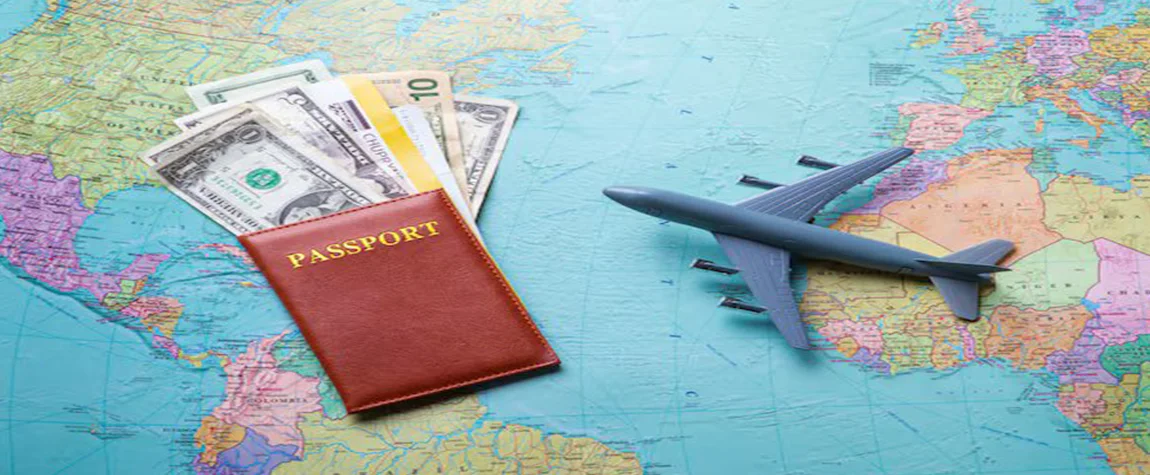Avid travelers are constantly dreaming about their next adventure, whether it’s a picture-perfect family getaway in the Caribbean, a romantic escape to Paris, or a deep dive into Japan’s food scene. No matter the destination, a smooth, stress-free trip is always top of mind when planning. And if you hold a U.S. passport, your travel experience just got a whole lot easier.
According to the Passport Index, the U.S. passport currently sits at eighth place globally for travel freedom. Right now, U.S. passport holders can enter over 120 destinations visa-free, while the rest require either a visa or an Electronic Travel Authorization (eTA).
But for many travelers, key questions linger: What’s the real difference between a visa and an eTA? How much do visas actually cost? And which countries can U.S. passport holders visit without one?
To clear up the confusion, we’ve rounded up answers to the most important visa-related questions—covering everything from entry requirements to travel inspiration for your next trip.
How can I find out if I need a visa?
E-visas usually cover longer stays and broader purposes, like business travel. They might also ask for more details in the application, including a digital photo.
On the other hand, eTAs are mostly for short tourist visits and process much faster—sometimes in just minutes. They’re also typically cheaper.
Just remember: Both must be shown when boarding your flight and at immigration or border control.
What do I need to apply for a visa or an eTA?
Most eTAs and some visas go beyond basic info like your name, address, and passport number. You might also need to provide travel dates and where you’re staying, like your hotel’s name and address.
Passport photos could be required too, so keep digital and physical copies ready. Some visa applications might even ask for flight and hotel confirmations or proof of funds (like a bank statement). Oh, and don’t be caught off guard—visa applications and border officials often ask about criminal history.
How much do tourist visas and eTAs cost?
Prices vary wildly. Some visas and eTAs are as low as 10,whileotherswithlengthyprocessescanexceed10,whileotherswithlengthyprocessescanexceed100. For example, Brazil’s new e-visa costs $80.90.
Watch out for third-party visa sites—they often charge extra. Whenever possible, apply directly through your destination’s official e-visa or eTA portal. And keep in mind: Application and processing fees are usually non-refundable.
How long can I stay on a tourist visa or eTA?
They can be issued for single or multiple entries, with stays ranging from a week or two up to 180 days. If you’re hopping between countries, make sure you get a multiple-entry visa.
How soon before traveling should I apply?
While eTAs and e-visas can process in days (or even hours), it’s smart to apply early—ideally before booking flights and hotels.
That said, some countries won’t let you apply until shortly before departure. For instance, Indonesia’s visitor visa only opens for applications 14 days before your trip.
For visas requiring you to mail your passport, apply months ahead to account for processing time.
Do I need a visa or eTA for Europe?
Good news: The European Union pushed back its eTA-style system, the European Travel Information and Authorization System (ETIAS), so travelers don’t have to worry just yet.
The new rollout, covering 29 Schengen Area countries and Cyprus, is now set for late 2026.
Similarly, the EU’s Entry/Exit System (EES) is delayed until October 2025. No action is needed before your EU trip.
(Related: Everything you need to know about EES, the new EU visa scheme.)
Do I need a visa for the UK, Australia, or New Zealand?
These three are among the eight countries requiring U.S. travelers to get an eTA beforehand.
- The U.K.’s eTA costs £10 ($13), allows multiple entries, and is valid for two years.
- Australia’s eTA is $20 AUD, permitting stays up to 3 months within a year.
- New Zealand’s eTA is just 17NZD,butvisitorsalsopaya17NZD,butvisitorsalsopaya100 tourist levy on arrival. Both fees cover multiple entries for up to two years.
Where can I go without a visa or eTA?
U.S. passport holders can visit over 120 destinations visa-free, including America’s top two neighbors: Canada and Mexico. Most of South America and the Caribbean also don’t require visas or eTAs.
Two Best of the World 2025 picks in Asia are visa-free, including longtime favorite Japan. Skip Kyoto’s crowds and explore Kanazawa’s historic gardens instead.
Thailand is another hotspot—check out Bangkok’s newly restored 17th-century temple, Wat Chaiwatthanaram. Its focus on preservation feels especially timely after the region’s March 28 earthquake.
While much of Africa requires visas, a few amazing spots don’t. For a food-filled journey, follow Antoni Porowski and Issa Rae’s footsteps in Senegal (featured in No Place Like Home). Try ceebu jën, the national dish of fish, veggies, and rice, which earned UNESCO Intangible Cultural Heritage status in 2021.
In the Middle East, Abu Dhabi stands out as a rare visa-free destination—perfect for a UAE trip, especially to explore the capital’s new Saadiyat Cultural District.
What else should I prepare for international travel?
Even without a visa, other requirements may apply. Most countries demand your passport be valid for at least three to six months beyond your entry date. Renewals can take 4–6 weeks (not including mailing time), per the U.S. State Department. (Expedited options exist.)
Other possible entry rules:
- Proof of a return or onward flight
- Accommodation details (hotel or relative’s address)
- Up to four blank passport pages (if you’re out, you’ll need a new passport—no adding pages)
- Vaccination records (especially yellow fever; check the CDC’s destination list)
- Proof of funds (bank statement) or cash on hand
